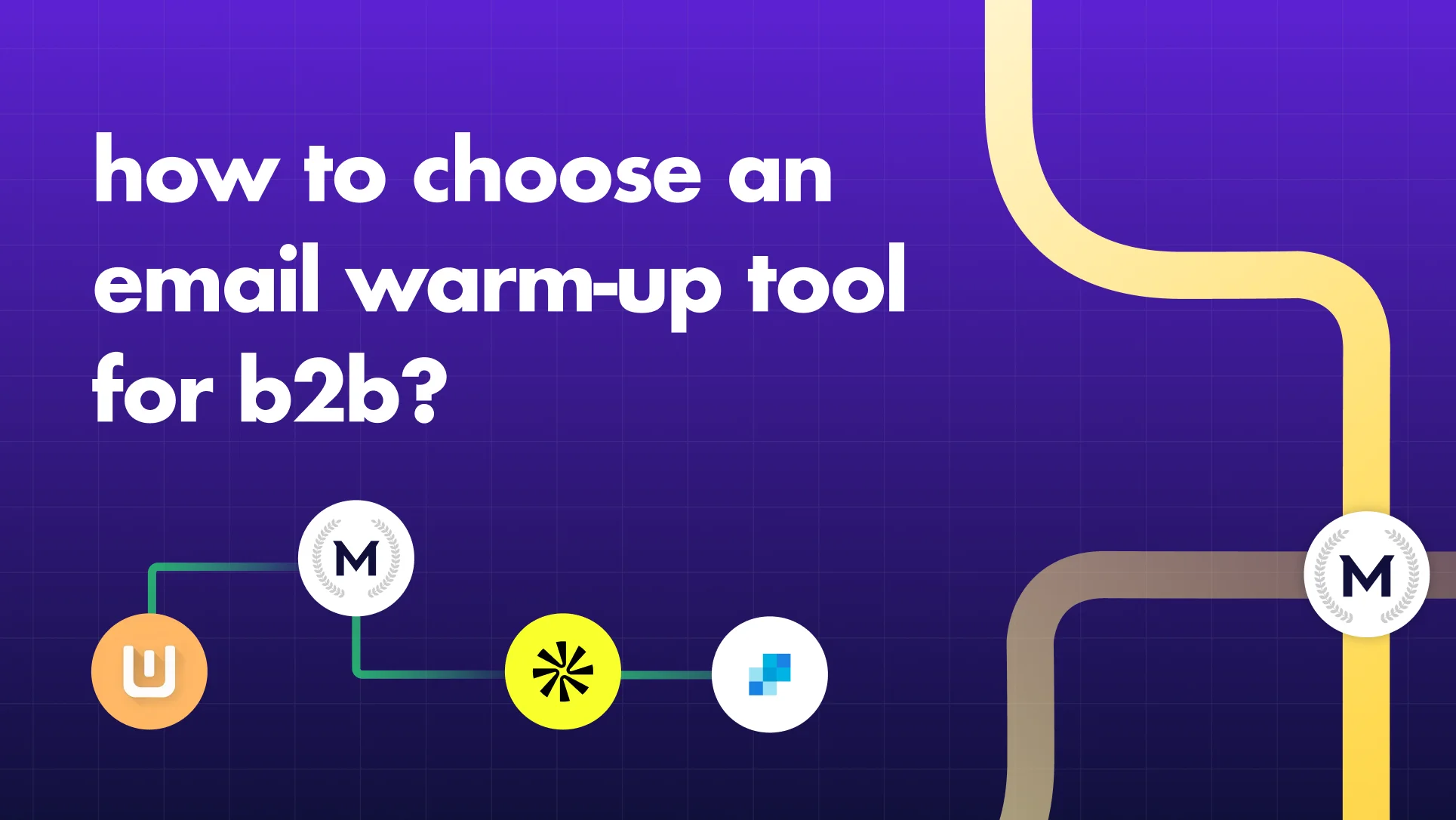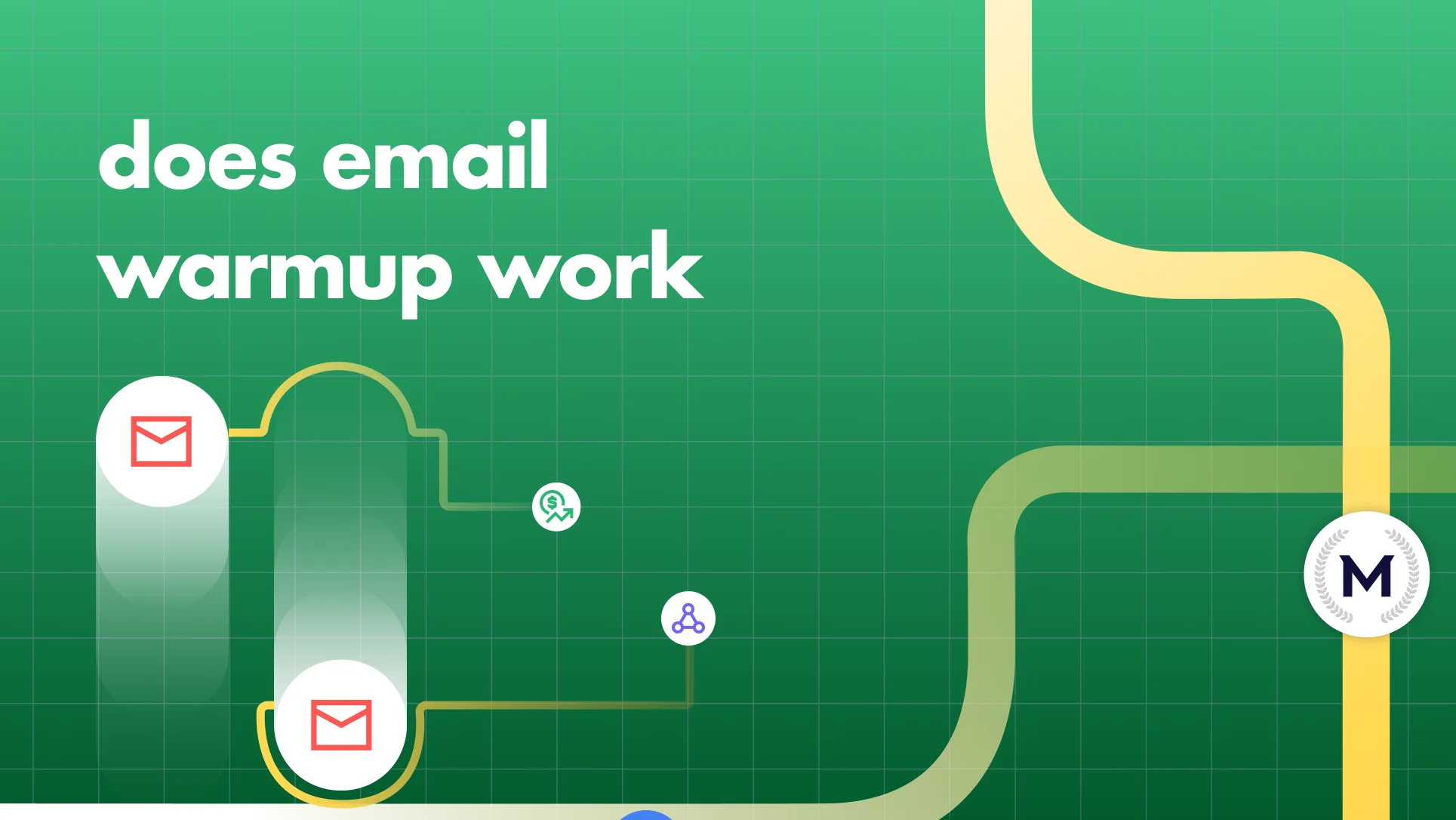Automated vs Manual email warmup: Which strategy wins in 2025?
Short on time and need results? We get it. In 2025, warming up your email domain remains extremely important, but it can be difficult to choose between a manual and an automated process. Let’s cut through the noise and look at what really works, so you can pick the best option without overthinking it.
Key takeways :
- Automated email warm-up is faster and requires less resources than manual methods, which suits businesses looking to scale quickly without dedicating too much time to the process.
- Automated tools like Mailreach are way more cost-effective in the long run.
- A manual process is based on execution, while automated solutions offer consistent performance and are less prone to errors.
What is email warm-up?
The main goal of email warm-up is to build trust with email providers. For example, when you start sending emails from a new or cold email address, you need to show that you’re not a spammer. The trick is to start small, sending just a few emails, and gradually increase the volume over time. This helps build a positive reputation so that spam filters don’t block your messages.
But email warm-up is more than just sending a few emails from a new address—it’s about building a solid sender reputation with email providers.
The goal is to show email providers that your emails are valuable and wanted by recipients, which helps avoid spam filters and improves deliverability. Tools like Mailreach are the future of email warm-up, because we go a step further by automating this process and creating authentic interactions to boost engagement. The result? Your email address gains trust quickly!
How manual email warm-up works ?
Manual email warm-up is a time-consuming process involving several steps:
- It starts with sending a small number of emails from your email account, typically to known contacts or addresses that are likely to engage positively.
- Over time, you will need to gradually increase the number of emails you send each day, while monitoring at the same time your sender reputation.
- Managing replies is another important part of the process. You need to ensure that people are opening, reading, and responding to your emails.
- For cold email campaigns, you must avoid sending too many emails too quickly or to unresponsive recipients.
Even if a manual email warm-up remains effective, it requires a lot of attention and regular adjustments, making it less scalable compared to automated solutions. So if you wonder how long it takes to warm up an email address, the answer with manual email warm-up is: extremely long!
Advantages of manual email warm-up
If you’re still hesitating between manual and automated email warm-up, here are the main advantages of the manual process:
- You have full control: You will be able to manage every aspect of the process, from how many emails to send each day to whom you’re sending them.
- You can adjust the speed of the process based on your needs: It means slowing down if you notice issues or speeding up if your reputation is solid. Perfect for adapting to your specific situation.
- You can prepare custom interactions: You can personalize every email, making sure each one feels authentic and relevant. As a result, this can lead to better engagement, which is crucial for building a positive reputation.
- You will receive immediate response to potential issues: Spot a problem? You can tweak your strategy right away without waiting for an automated system to catch up. This helps you avoid reputation damage quickly.
- You can easily adapt to your recipients: Last but not least, you can choose who to target based on their likelihood to engage, boosting your chances of positive interactions and minimizing the risk of being marked as spam.
Drawbacks of manual email warm-up
Regarding now the drawbacks, you must know that:
- You will face a time-consuming effect: Manually increasing the number of emails sent each day takes a lot of time and effort. This is why you need to carefully plan, execute, and monitor each step;
- The process will require your constant attention: You have to keep a close eye on your sender reputation and engagement metrics, making adjustments as needed. It’s not something you can just set and forget.
- It can be challenging for large volumes: Managing hundreds or thousands of email addresses manually is nearly impossible. It becomes overwhelming to track and adjust for each email account.
- There will be limited scalability: As your cold email campaigns grow, it’s hard to maintain the same level of attention and control, which can lead to mistakes and hurt your reputation.
- There is a higher risk of human error: Manually handling the process increases the chances of mistakes, like sending too many emails too soon or missing key signals, which can damage your sender reputation.
For example, a manual email-warmup for freelancers is really not advised, as it will require a lot of time that will not be spent on the current projects.
How automated email warm-up works ?
Automated email warm-up uses advanced technology to simplify and optimize the process of building a positive sender reputation. Platforms like Mailreach handle the entire process for you, taking the guesswork out of warming up your email account. It starts by automatically sending a small number of emails from your address to real human inboxes within a network of trusted contacts. You need to know that these interactions are designed to mimic genuine email exchanges, with recipients opening, reading, and sometimes even replying to your emails.
But here is the thing: as the automated system gradually increases the volume of emails sent, it carefully monitors the results to ensure that your sender reputation remains strong. If any issues are detected, like a spike in bounces or a drop in engagement, the system adjusts the pace accordingly.
Thanks to this, you will be able to scale up safely without triggering spam filters. You’re welcome!
Advantages of automated email warm-up
The advantages of automated email warm-up are huge:
- You will save a lot of time: Automated email warm-up handles the process from start to finish, eliminating the need for constant monitoring and manual adjustments, so you can focus on more important tasks.
- The risk of human error is eliminated: Thanks to automation, you know that your emails are sent at the right pace. You will avoid random mistakes such as sending too many too soon or forgetting to adjust the volume, which can extremely harm your sender reputation.
- Scaling up becomes seamless: The system gradually increases the email volume based on real-time performance, making it easy to scale your outreach without overwhelming your email account or risking deliverability issues.
- Reputation management is automated: Automated tools track responses and sender reputation automatically, adjusting the strategy as needed to keep your email address in good standing with providers.
- Engagement is optimized: With automated email warm-up, interactions like opens and replies are simulated with real inboxes! This means that it is boosting your email credibility and increasing the likelihood of reaching your recipients' inboxes.
Drawbacks of automated email warm-up
Even if the advantages of automated email warm-up are interesting, here are its main drawbacks:
- It can be costly: Automation tools come with a price tag, and while they save time, they may not fit every budget, especially for smaller businesses or startups.
- You still need to set it up: Even with automation, there’s an initial setup process. You need to connect your email account. It takes between 15 seconds and 3 minutes with a tool like MailReach.
- Monitoring is still required: Although automation reduces manual work, you can’t just set it and forget it. You need to keep an eye on the process to ensure everything runs smoothly, especially when handling large volumes of emails.
- Less flexibility for specific cases: Automated systems follow predefined rules, which might not always align with your specific needs or target audience. Manual tweaks can be harder to implement.
- Not all tools fit all email accounts: Some email service providers or configurations may not be fully compatible with certain automated tools, which could limit the effectiveness of the warm-up process.
Which email warm-up strategy is better for 2025?
In 2025, choosing the right email warm-up strategy depends on your business needs and resources. Manual warm-up offers control but demands significant time and effort. You decide the pace, monitor your sender reputation, and manage engagement—ideal if you have the time and need hands-on control. However, as spam filters evolve and email volumes grow, this approach can be inefficient and risky.
Automated warm-up, on the other hand, is built for speed and scalability. It handles large volumes of emails efficiently, reducing the risk of being marked as spam. Automated tools like Mailreach simulate real interactions to build a strong sender reputation faster. So for businesses looking to scale quickly and maintain a high sender reputation, automated warm-up remains the better choice.
Ultimately, if you need flexibility and have time to invest, manual might work. But for rapid scaling and effective spam avoidance, automated warm-up is the clear winner in 2025.
Why Mailreach is the best solution for automated email warm-up ?
Mailreach takes automated email warm-up to the next level with smart automation that not only gradually increases your email volume but also manages real, positive interactions with your recipients.
So while applying continuous monitoring of your sender reputation, Mailreach makes sure that your emails maintain high email deliverability rates as you scale. It’s the perfect solution for businesses that need to manage large volumes of emails without compromising on quality!
Discover the best email warmup tool for a perfect deliverability
 Email Warmup
Email Warmup Automated vs Manual email warmup: Which strategy wins in 2025?
Automated vs Manual email warmup: Which strategy wins in 2025?









